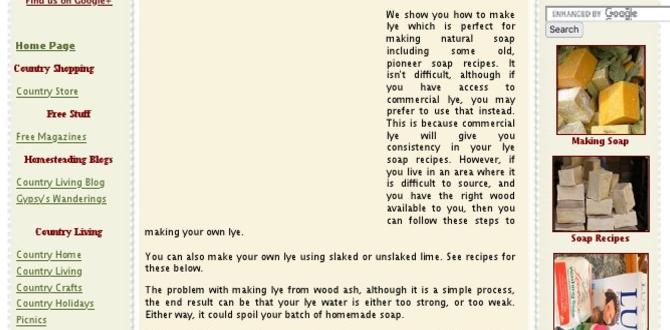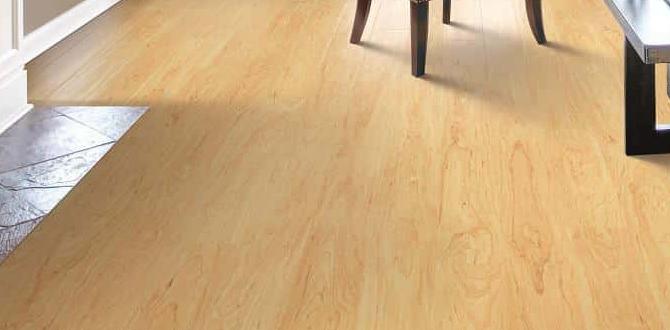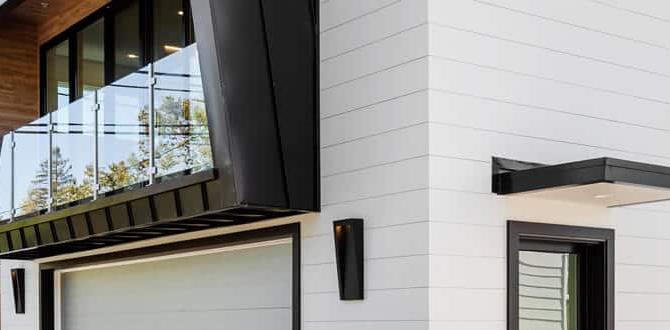Find great pneumatic nailers for under $150 that boost your DIY projects. This guide helps you choose the best budget-friendly option for framing, trim, and more, ensuring quality without breaking the bank.
Tackling a DIY project often starts with excitement, but choosing the right tools can feel a bit overwhelming, especially when your budget is a key factor. You’ve seen those amazing projects online, and you’re ready to give it a go, but the thought of expensive tools might be holding you back. Don’t worry, you don’t need to spend a fortune to get reliable and powerful tools for your home projects. Many fantastic pneumatic nailers are surprisingly affordable, and picking the right one is easier than you think.
This guide is here to help you navigate the world of budget-friendly nailers. We’ll break down what makes a good nailer, explore the top picks under $150, and give you the confidence to make a smart purchase. Get ready to nail your next project without emptying your wallet!
We’ll dive into the different types of nailers you can snag for less than $150, looking at their strengths and what kind of jobs they excel at. You’ll learn what features to look for and even get a few recommendations to get you started. Let’s get your toolbox ready!
Table of Contents
Why Pneumatic Nailers Are a DIYer’s Best Friend
Pneumatic nailers, powered by compressed air, are game-changers for serious DIYers and woodworkers. They offer a speed and power that manual nailing just can’t match. Imagine driving dozens, even hundreds, of nails perfectly straight in minutes – that’s the magic of a pneumatic nailer.
They make quick work of everything from framing a new wall to installing intricate trim. Because they use air pressure, they are typically lighter and generate less recoil than electric or cordless models, which can make long workdays much more comfortable. Plus, they are incredibly durable and reliable, often lasting for years with proper care.
For beginners, they might seem a bit intimidating at first. You’ll need an air compressor, which is an additional investment, and understanding the different types of nailers can feel complex. But with a little guidance, you’ll see how easy and beneficial they are. They truly elevate the quality and speed of your woodworking and home improvement projects.
Understanding Nailer Types and Your Project Needs
Before we look at specific models, it’s crucial to understand that not all nailers are created equal. Different nailers are designed for specific tasks. Choosing the right type for your project is the first step to making a smart purchase. For under $150, you can often find some of the most common and versatile types.
Framing Nailers
These are the heavy-duty workhorses. Framing nailers are designed to drive large nails (typically 2 to 3.5 inches long) through thick lumber. They’re essential for building decks, fences, framing walls, and any project where structural integrity is key. They have a powerful punch and are built to withstand tough use.
Finish Nailers
If you’re working on detailed trim, molding, or cabinets, a finish nailer is what you need. They use smaller, thinner nails (usually 1 to 2.5 inches) that leave a much smaller hole, often called a “brad.” This means less filling and sanding for a cleaner, more professional look. They’re perfect for decorative elements around your home.
Brad Nailers
Similar to finish nailers but even smaller, brad nailers use very thin nails with minimal heads. They are ideal for delicate work like attaching thin trim, small moldings, or even for crafts. The holes they leave are almost invisible, making them perfect for projects where appearance is paramount and you want to avoid visible fasteners.
Nailer Features to Look For (Even on a Budget)
When you’re shopping for an affordable nailer, keep an eye out for these important features. They can make a big difference in usability and performance, even on a budget.
- Adjustable Depth of Drive: This lets you control how deep the nail sinks into the wood. Too deep can damage the surface or drive the nail right through. Too shallow means the nail head will stick out. Being able to adjust this easily is a huge plus.
- No-Mar Tip: Many nailers come with a soft rubber tip on the nose. This protects delicate surfaces, like soft woods or pre-finished trim, from accidental dents or scratches when you fire the nail.
- Tool-Free Jam Release: Jams happen, even with the best tools. A tool-free jam release means you can clear a jammed nail quickly and easily without needing extra tools, saving you precious time and frustration.
- Swiveling Air Fitting: A 360-degree swiveling air hose connection prevents the hose from getting tangled or kinking up as you move around your workpiece. It makes maneuvering much smoother.
- Lightweight Design: For extended use, a lighter tool reduces fatigue. Even a few pounds can make a difference over an afternoon of work.
- Sequential vs. Bump Fire: Most nailers offer both modes. Sequential fire (one nail per trigger pull) is for precision placement, while bump fire (hold the trigger and bump the nose) is for speed. Ensure your chosen nailer gives you this flexibility.
Top Affordable Pneumatic Nailers Under $150
Finding a fantastic pneumatic nailer for under $150 is absolutely achievable. Many trusted brands offer excellent value in this price range, balancing performance, durability, and essential features. Remember that prices can fluctuate, so it’s always a good idea to check current deals.
Here are some of the top contenders that consistently offer great performance for their price. We’ll focus on versatile models that can handle a range of common DIY tasks. For this price point, you’re often looking at slightly older but still very capable models or entry-level offerings from reputable brands.
1. Stanley ST6806PS Pneumatic Brad Nailer
Stanley has been a household name for tools for a long time, and their pneumatic offerings are often very budget-friendly. The ST6806PS is a popular choice for DIYers tackling trim work, baseboards, and general interior finishing. It’s lightweight and easy to handle, making it less intimidating for beginners.
- Type: Brad Nailer
- Nail Size Capacity: 18-gauge nails from 5/8″ to 2″
- Key Features: Tool-free jam release, adjustable depth control, no-mar tip.
- Typical Price Range: $50 – $75
This nailer is a solid choice for basic trim, crown molding, and even light furniture assembly. Its ease of use and the small size of the nail holes make it perfect for projects where a clean finish is desired without a lot of extra work filling nail holes.
2. Porter-Cable BN200C 18-Gauge Coil Siding Nailer
While technically a siding nailer, the Porter-Cable BN200C is often praised for its versatility and robust build, fitting well within budget-friendly categories. It’s excellent for exterior projects like siding installation or fencing due to its ability to drive nails efficiently. Some users even adapt it for certain framing tasks if its nail size (typically 1″-2″) fits their needs.
- Type: Siding/Nailer (drives collated nails)
- Nail Size Capacity: 18-gauge, 3/4″ to 2″
- Key Features: Tool-free depth adjustment, selectable trigger (sequential or bump fire), aluminum housing for durability.
- Typical Price Range: $90 – $130
If your projects lean towards outdoor structures or you need a workhorse that can handle a bit more punishment, this Porter-Cable model is a great value. Its durability means it can stand up to more demanding jobs.
3. Freeman PFN64 Pneumatic 16-Gauge Straight Finish Nailer
Freeman tools are designed to offer professional-level features at consumer-friendly prices. The PFN64 is a 16-gauge straight finish nailer that is incredibly popular among DIYers for its combination of power, reliability, and affordability. It’s perfect for installing baseboards, casing, window trim, and even some lighter furniture projects. The 16-gauge nail leaves a slightly larger hole than an 18-gauge brad nailer, but it offers more holding power.
- Type: 16-Gauge Straight Finish Nailer
- Nail Size Capacity: 16-gauge nails from 3/4″ to 2-1/2″
- Key Features: Tool-free jam release, adjustable depth of drive, 360-degree adjustable exhaust, anodized aluminum cylinder for durability.
- Typical Price Range: $70 – $100
This nailer is a fantastic all-around choice for interior finishing. It strikes a great balance between driving power and leaving a relatively clean finish, making it suitable for a wide array of home improvement tasks.
4. CRAFTSMAN V20 Cordless vs. Pneumatic Considerations
While this article focuses on pneumatic nailers, it’s worth quickly mentioning that for under $150, you might find some entry-level cordless options, particularly brad or finish nailers from brands like CRAFTSMAN (often V20 battery platforms). However, for consistent power and durability, especially for heavier tasks, pneumatic often wins out in this sub-$150 bracket.
Pneumatic nailers require an air compressor. If you don’t own one, you’ll need to factor that cost in. Small, portable compressors suitable for occasional DIY use can be found for $100-$150, bringing the total tool investment to the $200-$300 range. However, if you already have or plan to invest in a compressor for other tools, a pneumatic nailer offers fantastic bang for your buck under $150.
Essential Accessories and Setup
Getting a great nailer is only part of the equation. To use it safely and effectively, you’ll need a few other items, especially if you’re new to pneumatic tools.
The Air Compressor: Your Nailer’s Power Source
This is non-negotiable for pneumatic nailers. For most brad, finish, and even some lighter framing nailers, a small, portable air compressor is sufficient. Look for one with a tank size of at least 2 gallons. More importantly, check its CFM (Cubic Feet per Minute) rating. Your nailer will have a CFM requirement, and your compressor needs to meet or exceed it. A common spec to look for is around 2-4 CFM at 90 PSI.
Popular budget-friendly compressor brands include:
- Campbell Hausfeld
- DEWALT (sometimes their smaller models dip into the budget range on sale)
- CRAFTSMAN
- PORTER-CABLE
Ensure the compressor has a regulator to control air pressure. Most nailers operate best between 70-100 PSI, depending on the nail length and wood density.
For authoritative information on air compressors, you can check resources like this guide from Family Handyman, which often covers practical tool advice for homeowners.
Air Hose and Fittings
You’ll need an air hose to connect your compressor to your nailer. A 25-foot or 50-foot hose is usually plenty for most DIY tasks. Look for rubber or high-quality polyurethane hoses, which are more flexible and durable than PVC. You’ll also need quick-connect fittings to easily attach and detach the hose from both the compressor and the nailer.
Key fittings to have:
- 1/4-inch NPT male and female couplers (to connect hose to compressor and nailer).
- A male threaded fitting for the nailer end of your hose.
Nails
This might seem obvious, but always use the correct type and size of nails recommended for your specific nailer. Using the wrong nails can cause jams, damage your tool, or result in poor fastening. Check your nailer’s manual for nail dimensions and collation angles. For example, a framing nailer needs framing nails, a finish nailer needs finish nails, and so on.
Safety Gear: Non-Negotiable!
Working with pneumatic nailers requires strict adherence to safety protocols. Never compromise on safety, even when working on a quick project.
- Safety Glasses: Absolutely essential. Always wear ANSI-approved safety glasses or goggles. A flying nail or debris can cause serious eye injury.
- Hearing Protection: Nail guns are loud. Earplugs or earmuffs will protect your hearing, especially during extended use.
- Gloves: Work gloves can protect your hands from splinters and provide a better grip.
- Secure Workpiece: Ensure your project is stable and won’t shift when you’re firing nails. Clamps are your friend here.
The Occupational Safety and Health Administration (OSHA) has specific regulations regarding pneumatic tools, emphasizing eye and ear protection. While these are industrial standards, they represent best practices for anyone using these tools.
How to Use Your Pneumatic Nailer Safely and Effectively
Once you have your nailer, compressor, and safety gear, you’re ready to get started. Follow these steps for safe and effective operation.
Step 1: Connect and Prepare
Set up your workspace: Ensure good lighting and ventilation. Clear the area of any obstructions. Secure your workpiece with clamps if necessary.
Connect the air hose: Attach the quick-connect fitting to the air inlet on your nailer. Connect the other end to your air compressor.
Set the air pressure: Consult your nailer’s manual for the recommended operating pressure. Use the regulator on your compressor to set the pressure, typically between 70-100 PSI for most brad and finish nailers. For framing nailers, it might be higher.
Step 2: Loading the Nails
With the air disconnected (or the safety clip engaged), open the nail magazine. Insert the correct type and size of nails, ensuring they are seated properly in the magazine. Gently close the magazine until it locks into place. Refer to your manual for specific loading procedures.
Step 3: Test Fire and Adjust Depth
Re-connect the air. Make sure your safety clip or mechanism is engaged.
Test on scrap wood: Find a piece of scrap material similar to your project wood.
Fire a nail: Place the nose of the nailer against the scrap wood. Engage the safety contact tip against the surface. If your tool has a selectable trigger mode, ensure it’s set to sequential for the first test. Pull the trigger.
Check the nail depth:
- If the nail head is sticking out, increase the air pressure slightly or adjust the depth setting (if available) to drive it deeper.
- If the nail is driven too deep and breaks the surface or goes all the way through, decrease the air pressure or adjust the depth setting.
Repeat: Continue testing and adjusting until nails are driven consistently to the desired depth, just flush with or slightly below the surface.
Step 4: Nailing Your Project
Wear your safety gear: Always wear safety glasses and hearing protection.
Position the nailer: Place the nose of the nailer firmly against the workpiece at the desired nailing location. Ensure the safety contact tip is also pressed against the surface.
Drive the nail:
- Sequential Fire: For precise placement, place the nailer where you want the nail, then pull the trigger.
- Bump Fire: For speed, set the trigger to bump fire mode (if available). Hold the trigger down. Then, rapidly “bump” the contact tip against the workpiece. The nailer will fire each time the contact tip hits the surface while the trigger is held. Only use bump fire when secure and safe placement is not critical, and always be aware of where the nail will go.
Maintain control: Keep a firm grip on the nailer. Avoid overspray or firing nails into thin air.
Step 5: Disconnect and Store
Always disconnect the air supply from the compressor when you are finished using the nailer, or if you need to clear a jam or perform maintenance.
Clear any jams: If a nail jams, disconnect the air supply first. Then, follow your tool’s instructions for clearing the jam (your tool


